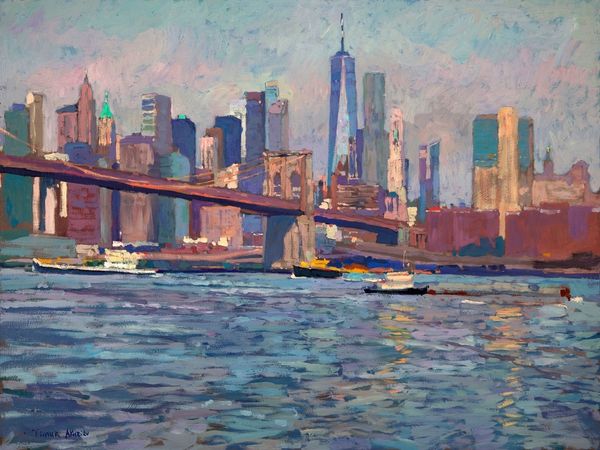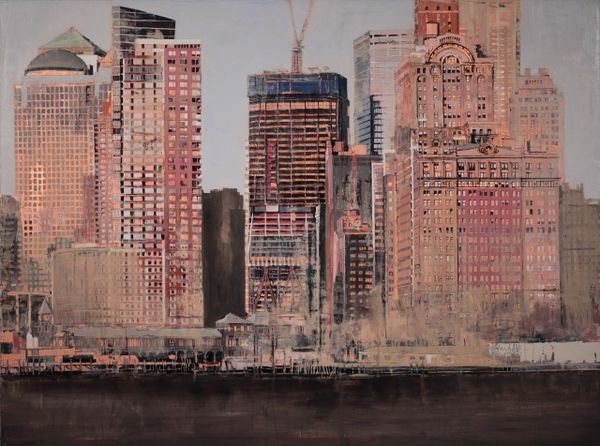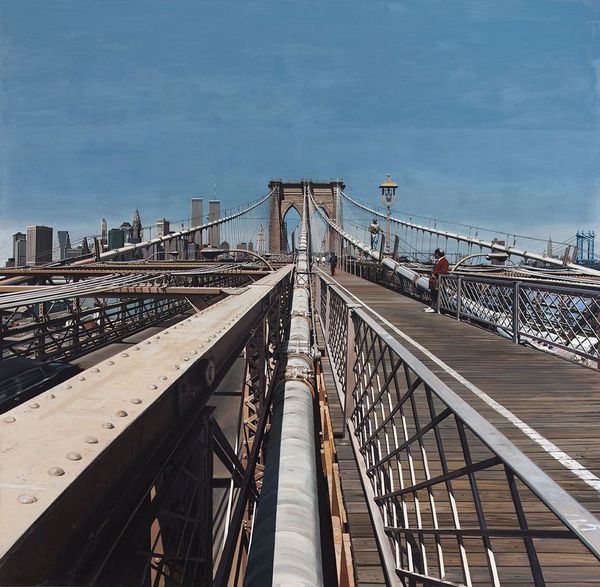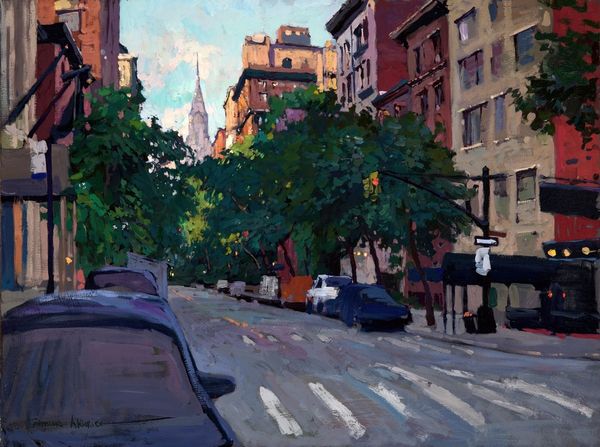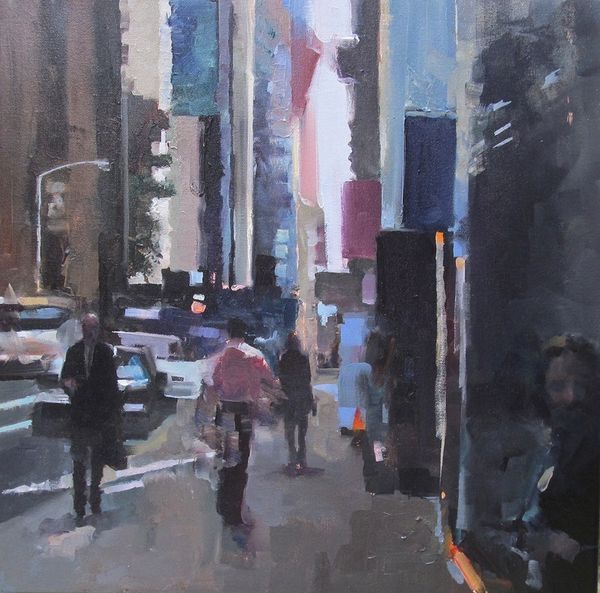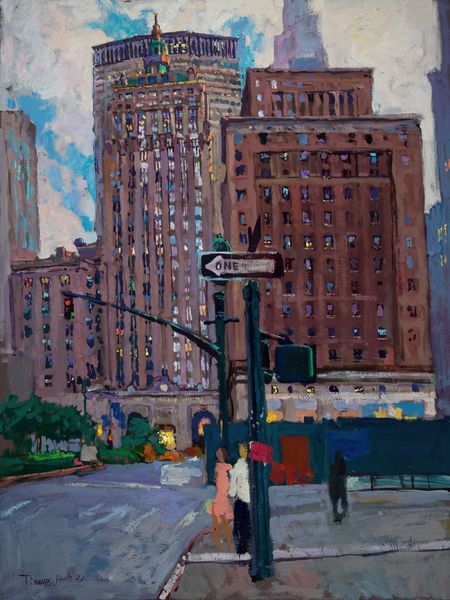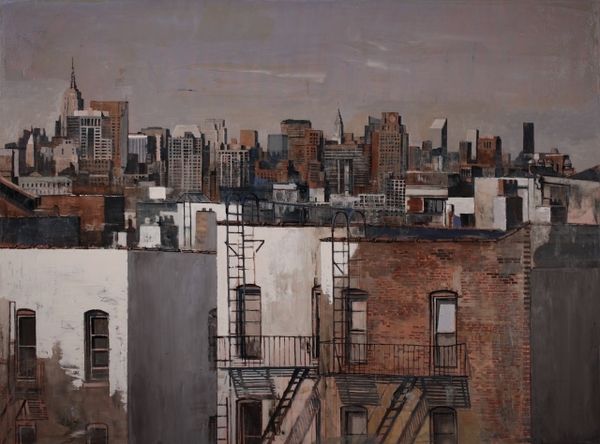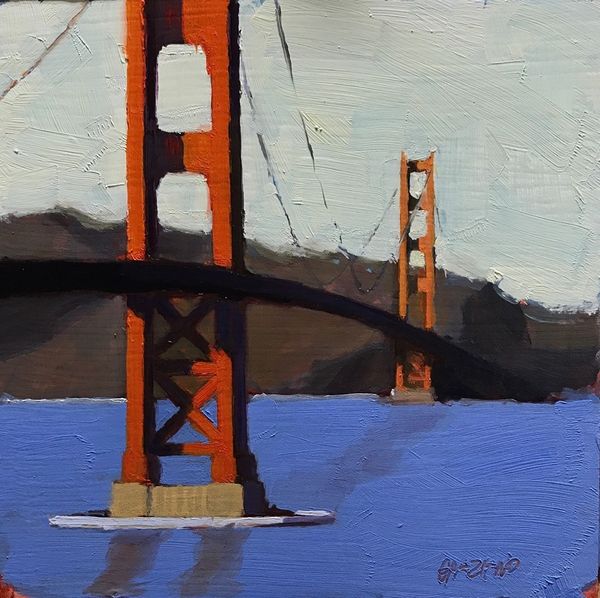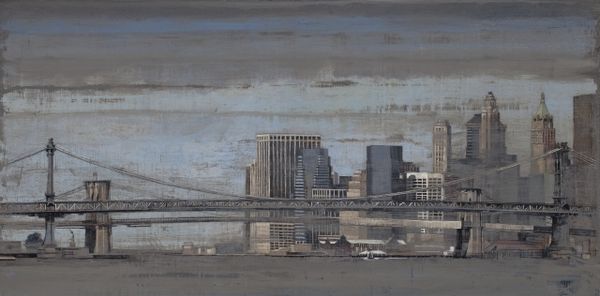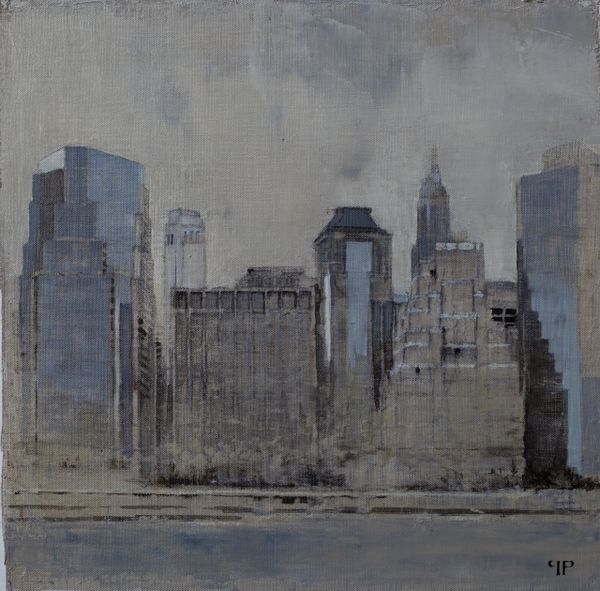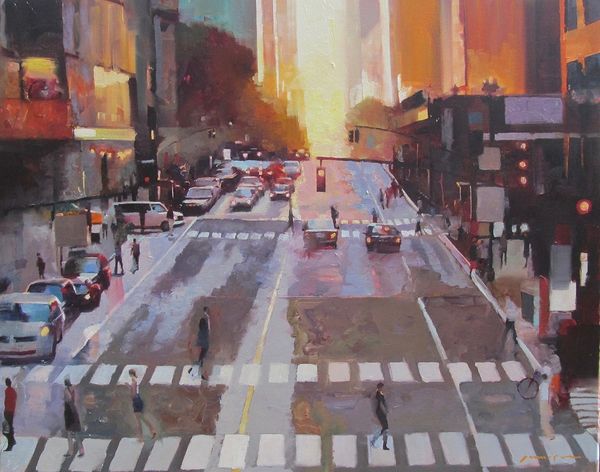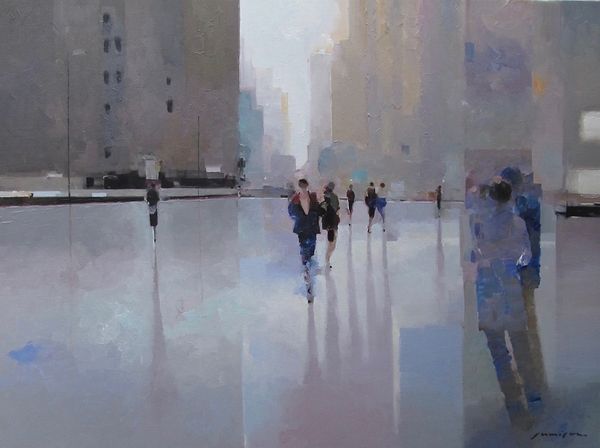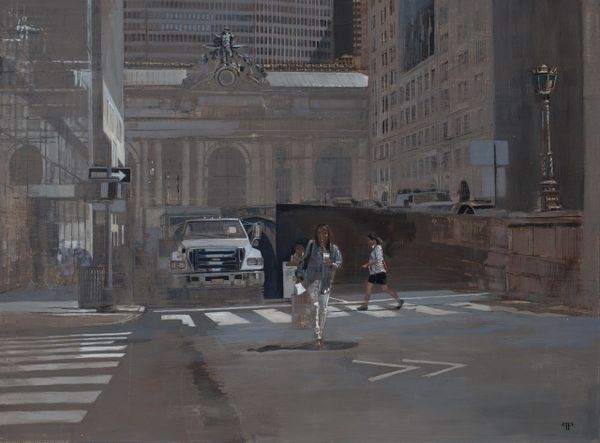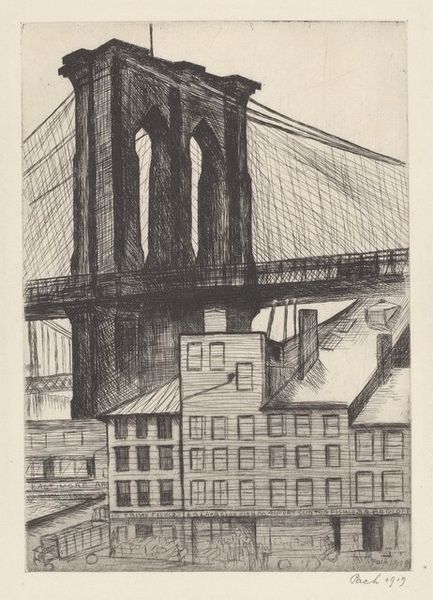
painting, oil-paint
#
painting
#
impressionism
#
oil-paint
#
landscape
#
perspective
#
impressionist landscape
#
oil painting
#
city scape
#
cityscape
#
modernism
#
realism
Copyright: Modern Artists: Artvee
Curator: Here we have Timur Akhriev’s oil painting, “Morning on Brooklyn Bridge.” It’s a wonderfully textured piece, but what’s your initial reaction? Editor: I'm immediately struck by the tactile quality of it. You can practically feel the roughness of the bridge's steel and the weathered planks underfoot. It’s a testament to industrial construction and human interaction. Curator: Absolutely. The bridge, a feat of engineering, speaks volumes about ambition and connection but also about displacement when looking at the bridge in context as the artery between two different communities, linked yet also separated by class. Its presence disrupts Indigenous land. This wasn't built in a vacuum, right? Editor: Indeed. The very making of the Brooklyn Bridge involved specific materials, primarily steel produced in particular factories. Each component tells a story about industrial labor, resource extraction, and economic structures. These materials, often glossed over, reveal much about societal hierarchies and the literal foundations on which this scene, and the cityscape beyond, were built. Curator: I think it raises questions about whose stories are typically represented in art and history. Whose labor is celebrated? It reflects larger discussions around visibility, labor, and belonging that feel really prescient in the context of this depiction of such an iconic landmark. Editor: It's interesting how Akhriev's painting gives texture and presence to what’s usually just an icon. It makes us contemplate the means through which the steel itself was forged. Curator: Right! The artist's chosen medium accentuates this, creating a visible connection between the city and those who helped to make the scene possible, whose back-breaking toil made such beauty conceivable in the first place. The texture serves not only to represent physicality, but also as a visual device to call upon historical questions. Editor: It also changes how we perceive space and production. Often in picturesque scenes such as this we romanticize such landmarks instead of discussing materiality and class struggle. The bridge transcends its function; It embodies political struggle and how such material decisions influence representation. Curator: I agree. It moves us to think about monuments from angles of intersectionality, social accountability, and more complex understandings. Editor: By concentrating on materiality, class, and labor within this artwork we invite viewers to broaden conversations and not only consider an artistic picture for its appeal, but for its position in socioeconomic discussion.
Comments
No comments
Be the first to comment and join the conversation on the ultimate creative platform.
